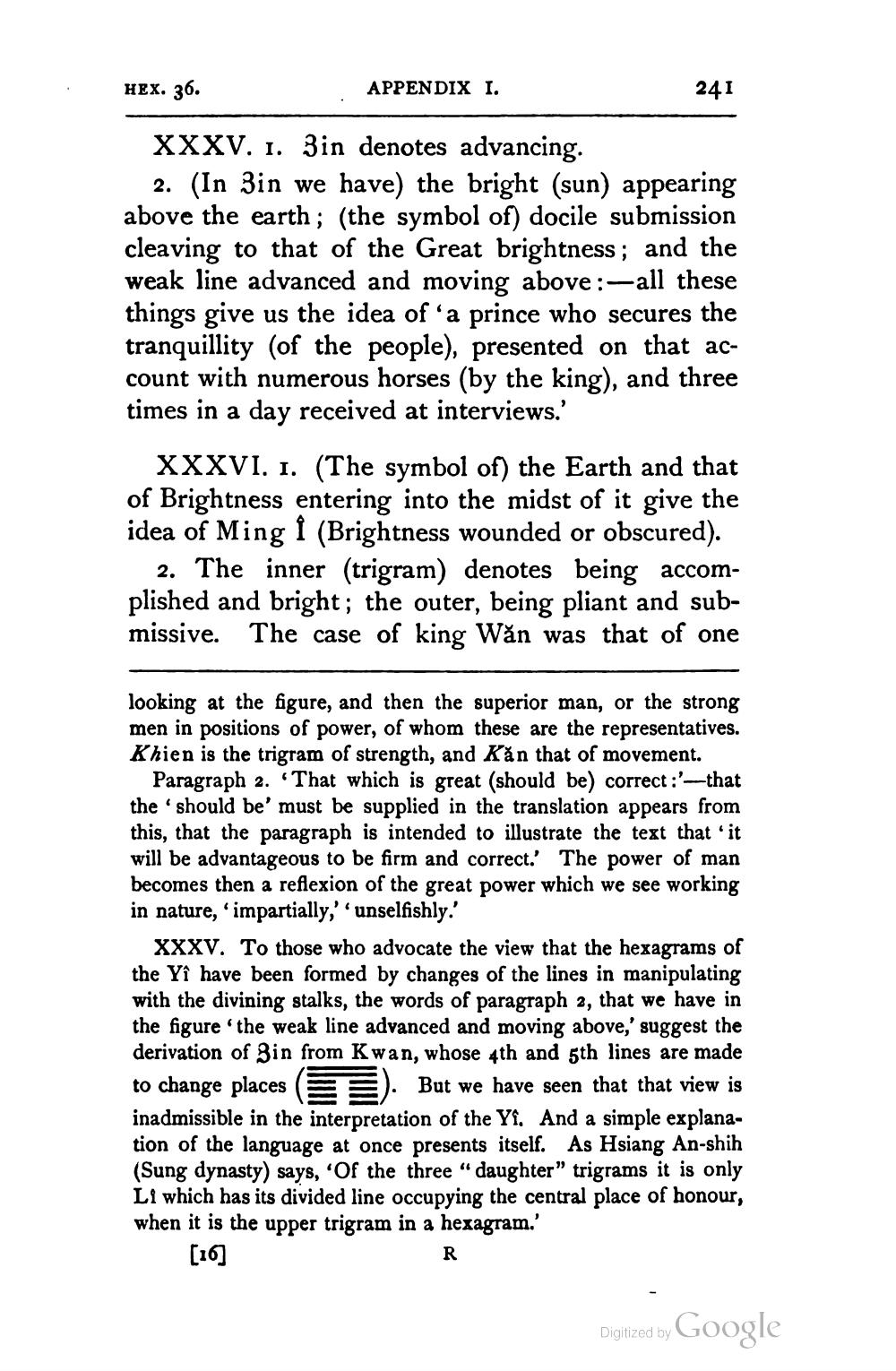________________
HEX. 36.
XXXV. I. 3in denotes advancing.
2. (In 3in we have) the bright (sun) appearing above the earth; (the symbol of) docile submission cleaving to that of the Great brightness; and the weak line advanced and moving above:-all these things give us the idea of 'a prince who secures the tranquillity (of the people), presented on that account with numerous horses (by the king), and three times in a day received at interviews.'
APPENDIX I.
241
XXXVI. 1. (The symbol of) the Earth and that of Brightness entering into the midst of it give the idea of Ming I (Brightness wounded or obscured).
2. The inner (trigram) denotes being accomplished and bright; the outer, being pliant and submissive. The case of king Wăn was that of one
looking at the figure, and then the superior man, or the strong men in positions of power, of whom these are the representatives. Khien is the trigram of strength, and Kăn that of movement.
Paragraph 2. That which is great (should be) correct:'-that the should be' must be supplied in the translation appears from this, that the paragraph is intended to illustrate the text that 'it will be advantageous to be firm and correct.' The power of man becomes then a reflexion of the great power which we see working in nature, 'impartially,' 'unselfishly.'
XXXV. To those who advocate the view that the hexagrams of the Yî have been formed by changes of the lines in manipulating with the divining stalks, the words of paragraph 2, that we have in the figure the weak line advanced and moving above,' suggest the derivation of 3in from Kwan, whose 4th and 5th lines are made to change places But we have seen that that view is inadmissible in the interpretation of the Yî. And a simple explanation of the language at once presents itself. As Hsiang An-shih (Sung dynasty) says, 'Of the three "daughter" trigrams it is only Li which has its divided line occupying the central place of honour, when it is the upper trigram in a hexagram.'
[16]
R
Digitized by
Google




